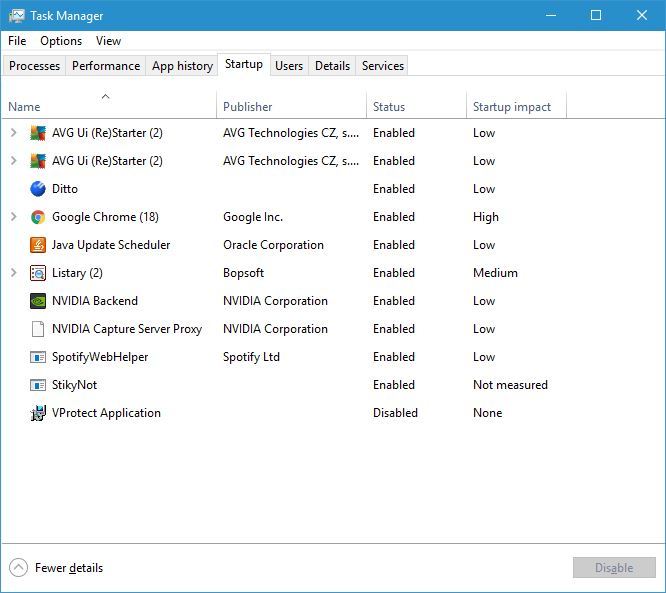Administer client systems and offer improved visibility and enforcement options for maintaining system compliance. Built to work with Windows 10. Choose the deployment, upgrade, update, and management capabilities of Windows 10 in Configuration Manager and Microsoft Intune that work best for your business. Opening System Configuration. Click the Windows logo in the bottom-left corner of the screen, or press the ⊞ Win key. Type system configuration into Start. This will search your computer for the System Configuration program. System Center Support for Windows 10. The next version of System Center Configuration Manager will deliver full support for client deployment, upgrade, and management of Windows 10 and associated updates. System Center 2012 R2 Configuration Manager or SP1 - we will provide an update to support Windows 10 deployment, upgrade and management with existing ConfigMgr features.
-->Applies to: System Center Configuration Manager (Current Branch)
Learn about the Windows 10 versions that Configuration Manager supports, including:
Tip
Windows Server builds as a client are supported the same as the associated Windows 10 version. For example, Windows Server 2016 is the same build version as Windows 10 LTSB 2016, and Windows Server version 1803 is the same build version as Windows 10 version 1803.
For more information on Windows Server as a site system, see Supported operating systems for Configuration Manager site system servers.
Windows 10 as a client
Configuration Manager attempts to provide support as a client for each new Windows 10 version as soon as possible after it becomes available. Because the products have separate development and release schedules, the support that Configuration Manager provides depends on when each becomes available.
A Configuration Manager version drops from the matrix after support for that version ends. Similarly, support for Windows 10 versions like the Enterprise 2015 LTSB or 1511 drops from the matrix when they're removed from support.
The latest version of Configuration Manager current branch receives both security and critical updates, which can include fixes for issues with Windows 10 versions. When Microsoft releases a new version of Configuration Manager current branch, prior versions only receive security updates. For more information, see Support for Configuration Manager current branch versions.
Note
The best way to stay current with Windows 10 is to stay current with Configuration Manager. For more information, see Configuration Manager and Windows as a Service.
This information supplements Supported operating systems for clients and devices.
If you use the long-term servicing branch of Configuration Manager, see Supported configurations for the long-term servicing branch.
The following table lists the versions of Windows 10 that you can use as a client with different versions of Configuration Manager.
| Windows 10 version | Configuration Manager 1802 | Configuration Manager 1806 | Configuration Manager 1810 | Configuration Manager 1902 | Configuration Manager 1906 |
|---|---|---|---|---|---|
| Enterprise 2015 LTSB | |||||
| Enterprise 2016 LTSB | |||||
| Enterprise LTSC 2019 | |||||
| 1703 | |||||
| 1709 | |||||
| 1803 | |||||
| 1809 | |||||
| 1903 |
For more information on Windows lifecycle, see the Windows lifecycle fact sheet
Note
Support for Windows 10 semi-annual channel versions includes the following editions: Enterprise, Pro, Education, and Pro Education.
Starting in version 1906, Configuration Manager supports Windows 10 Pro for Workstation.
| Key |
|---|
| = Supported |
| = Not supported |
Note
Configuration Manager supports the client on Windows 10 ARM64 devices. Existing client management features should work with these new devices. For example, hardware and software inventory, software updates, and application management. OS deployment is currently not supported.
Support for Windows Insider
Starting in Configuration Manager version 1906, you can update and service Windows Insider builds. This ability is provided as a convenience to our customers. While this functionality should work, the support for it is best effort. Configuration Manager might not issue a hotfix for this functionality if it ceases to function.
To provide feedback on Windows Insider, use the Feedback Hub.
Windows 10 ADK
When you deploy operating systems with Configuration Manager, the Windows ADK is a required external dependency. For more information, see Infrastructure requirements for OS deployment.
Important
Starting with Windows 10 version 1809, Windows PE is a separate installer. Otherwise there's no functional difference.

System Configuration Manager Windows 10 Keyboard
The following table lists the versions of the Windows 10 ADK that you can use with different versions of Configuration Manager.| Windows 10 ADK version | Configuration Manager 1802 | Configuration Manager 1806 | Configuration Manager 1810 | Configuration Manager 1902 | Configuration Manager 1906 |
|---|---|---|---|---|---|
| 1703 (10.1.15063) | |||||
| 1709 (10.1.16299) | |||||
| 1803 (10.1.17134) | |||||
| 1809 (10.1.17763) | |||||
| 1903 (10.1.18362) |
Note
Configuration Manager only supports x86 and amd64 components of the Windows 10 ADK. It doesn't currently support ARM or ARM64 components.
System Center Configuration Manager 2007 Windows 10
| Key |
|---|
| = Supported This table only shows Windows ADK supportability in relation to the version of Configuration Manager. Microsoft recommends using the Windows ADK that matches the version of Windows you're deploying. Use the latest Windows ADK version when deploying the latest Windows 10 version. The latest Windows ADK version may support deployment of older OS versions, such as Windows 7. For more information on Windows ADK component supportability, see DISM supported platforms and USMT requirements. |
| = Backward compatible This combination isn't tested but should work. We'll document any known issues or caveats. |
| = Not supported |
System Center Configuration Manager Support For Windows 10
Tip
System Configuration Manager Windows 10 Disk 100%
Windows Server builds have the same Windows ADK requirement as the associated Windows 10 version. For example, Windows Server 2016 is the same build version as Windows 10 LTSB 2016.